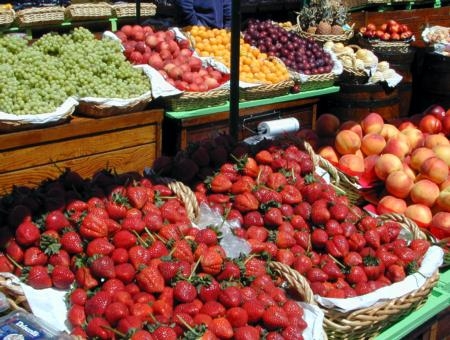
To find out, farm advisors around the state are comparing strawberries, blueberries and blackberries grown under four irrigation regimes – one that reflects the normal practice, one half the normal amount of water, one 75 percent of normal, and one that is 25 percent more than normal. The studies are being conducted in Santa Clara, San Luis Obispo, San Diego and Fresno counties.
“We’re doing this because of the water issue in California,” said Richard Molinar, UC Cooperative Extension advisor in Fresno County. “We’re in drought mode. We want to look at ways farmers can cut back the amount of water they are using and still have good tasting berries.”
Molinar recently brought samples of strawberries grown at the UC Kearney Agricultural Research and Extension Center in Parlier to the Vineyard Farmers Market in Fresno and invited patrons to share their preferences. Strawberry tasters were asked to evaluate the fruits’ appearance, flavor and texture. The advisors will aggregate information from taste testing done on berries from all the research sites.
The research will go beyond consumers’ preferences. Beth Mitcham, UCCE specialist in the Department of Plant Sciences at UC Davis, will evaluate the fruit grown under different irrigation regimes in the laboratory. Mitcham’s research will determine the amount of sugar, the sugar-acid ratio and the amount of antioxidants in the fruit and how these are affected by increasing or decreasing the usual amount of irrigation water.
The study is funded with a specialty crops grant from the California Department of Food and Agriculture awarded to the small farm program under the direction of Shermain Hardesty, UC Cooperative Extension specialist in the Department of Agricultural and Resource Economics at UC Davis.
See video of the strawberry tasting here: